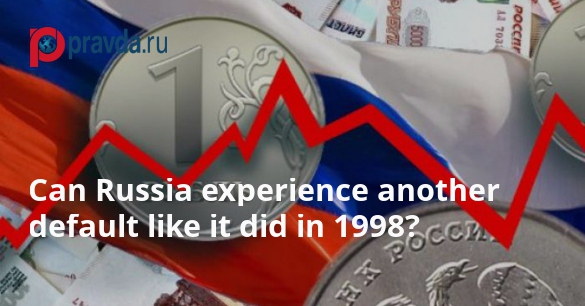One of the most severe economic crises broke out in Russia 22 years ago. Since then, a “tradition” has developed in the country – in order to mark another anniversary of the 1998 default, specialists try to analyse whether it is possible or impossible for another major financial crisis to break out in Russia.
Let us recall that three days before the announcement of the default, then Russian President Boris Yeltsin “firmly and clearly” stated that there would be no devaluation of the Russian ruble. On August 17, the government and the Central Bank announced a technical default on the main types of government securities and sent the ruble exchange rate plummeting.
The events of August 1998 became an extremely difficult test for both the Russian political system and the national economy, even though it was not the first crisis that Russia had seen in the 1990s.
Russian economy in 1998 and 2020
In 2020, both the global and Russian economies have once again com across a crisis that no one really expected at the beginning of the year. More precisely, few people assumed that the coronavirus pandemic could be the cause of such a major global crisis. Of course, this year gives yet another reason to compare the current situation in the Russian economy with the one that took place 22 years ago.
Experts from the Higher School of Economics looked into the matter and concluded the following:
“A close default is not visible in sight.” What about the foreseeable future?
The experts stated that both in 1998 and in 2020, the economies of Russia and the world faced a crisis, which, inter alia, was caused with a decline in energy prices.
“However, the current economic situation is significantly different from the one that we saw twenty-two years ago. The main difference is about the availability of significant reserves and a low level of the public debt,” the study says.
According to the Central Bank, at the beginning of 1998, Russia’s foreign debt totalled $182.9 billion, of which $147.7 billion accounted for the state. As of July 1, 2020, the national foreign debt amounted to $65.5 billion, with a total debt of $477.3 billion. At the same time, on August 7, 1998, gold and foreign exchange reserves of the Russian Central Bank were evaluated at $17 billion, while on the same day 22 years later – $600.7 billion.
As for the foreseeable future, the situation is as follows:
“Russia’s national debt is lower than in the group of developed countries and a number of developing countries. Nothing indicates a dangerous level of this debt and the announcement of a default. If it goes about public debt, then after what happened at the end of the 1990s, the Ministry of Finance has been maintaining a strategy to preserve a low level of public debt and its safe ratio to GDP.”
Here is some more figures from the study:
- Russia’s current domestic public debt (as of August 1, 2020) – 10.7 trillion rubles (approximately 10% of GDP);
- external debt in rubles amounts to 3.7 trillion rubles (as of July 1);
- debts of regions and municipalities – 2.5 trillion rubles.
In total, this makes about 17 trillion rubles, or 15% of GDP. A critical level of debt for economy, its ratio to GDP is 60%, and about 40% for developing countries.
South Africa Today – World News Russia













